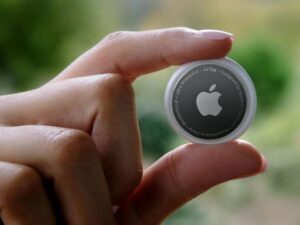What Are The Minimum Footcandles For A Walk In Refrigerator?

Walk-in refrigerators are essential components of various industries, including food service, hospitality, and healthcare. These refrigeration units provide ample space for storing perishable goods in a controlled environment. While temperature control is crucial for food preservation, another critical factor often overlooked is proper lighting. Adequate lighting ensures optimal visibility, safety, and operational efficiency within walk-in refrigerators. In this article, we will walk through the what are the minimum footcandles for a walk in refrigerator?
Contents
- 1 Understanding Footcandles
- 2 Factors Affecting Minimum Footcandles
- 3 Regulatory Guidelines
- 4 Determining Lighting Needs
- 5 Recommended Minimum Footcandles
- 6 Lighting Technologies for Walk-In Refrigerators
- 7 Benefits of Proper Lighting
- 8 Factors to Consider in Lighting Selection
- 9 Lighting Design Considerations
- 10 Maintenance and Upkeep
- 11 Addressing Common Challenges
- 12 Case Studies
- 13 Cost Analysis
- 14 Emerging Trends and Technologies
- 15 Best Practices
- 16 Training and Education
- 17 Future Outlook
- 18 Conclusion (What Are The Minimum Footcandles For A Walk In Refrigerator?)
- 19 FAQs (What Are The Minimum Footcandles For A Walk In Refrigerator?)
- 19.1 Q: Why is proper lighting important in walk-in refrigerators?
- 19.2 Q: What are footcandles, and why are they relevant in lighting?
- 19.3 Q: What factors affect the minimum footcandles required in a walk-in refrigerator?
- 19.4 Q: Are there any regulatory guidelines regarding lighting in walk-in refrigerators?
Understanding Footcandles
Footcandles refer to a unit of measurement used to quantify the amount of light illuminating a specific area. It represents the intensity of light falling on a surface per square foot. In lighting, footcandles play a significant role in determining appropriate illumination levels for different environments, including walk-in refrigerators.
Factors Affecting Minimum Footcandles
Several factors influence the minimum footcandles required in a walk-in refrigerator. Firstly, the size and dimensions of the unit affect the distribution and intensity of light. A larger refrigerator may require higher footcandle levels to ensure uniform lighting. Secondly, the types of products stored also impact lighting needs. Perishable items with intricate labeling or color-coding might require higher footcandles for accurate identification. Lastly, considering the accessibility and frequency of use is crucial. A busy walk-in refrigerator with frequent access may require brighter lighting to prevent accidents.
Auto Amazon Links: No products found. No products found. http_request_failed: A valid URL was not provided. URL: https://ws-na.amazon-adsystem.com/widgets/q?SearchIndex=All&multipageStart=0&multipageCount=20&Operation=GetResults&Keywords=What+Are+The+Minimum+Footcandles+For+A+Walk+In+Refrigerator%3F|Samsung+Galaxy+s23|Galaxy+s23|What+is+the+minimum+footcandle+requirement%3F|SAMSUNG+Galaxy+S23+Ultra+Cell+Phone&InstanceId=0&TemplateId=MobileSearchResults&ServiceVersion=20070822&MarketPlace=US Cache: AAL_70a34f9bce11c9d782ef8666dd8ef59e

Regulatory Guidelines
Industry regulations exist to ensure the safety and functionality of walk-in refrigerators. These regulations often specify lighting requirements to maintain proper working conditions. It is essential to comply with these standards to ensure food safety, employee well-being, and legal compliance.
Determining Lighting Needs
To determine the appropriate lighting levels, it is vital to assess the layout and design of the walk-in refrigerator. Factors such as shelving, positioning of equipment, and any potential obstacles should be taken into account. Additionally, understanding the specific tasks performed within the unit, such as product inspection or restocking, helps identify the necessary footcandle levels for optimal visibility and efficiency.
Recommended Minimum Footcandles
General guidelines exist for walk-in refrigerators to ensure adequate lighting. The Illuminating Engineering Society (IES) provides recommendations for various spaces, including refrigerated environments. These guidelines suggest a minimum footcandle level of 10-20 for walk-in refrigerators. However, variations exist based on different product types, with some items requiring higher levels of illumination.
Lighting Technologies for Walk-In Refrigerators
Walk-in refrigerators traditionally use fluorescent or incandescent lighting. However, energy-efficient alternatives, such as LED lighting, have gained popularity due to their longevity, lower energy consumption, and reduced heat output. LED lights are suitable for walk-in refrigerators as they can withstand low temperatures and provide bright, even illumination.

Benefits of Proper Lighting
Proper lighting in walk-in refrigerators offers several benefits. Firstly, it ensures food safety and quality by enabling accurate inspection of products, identification of expiration dates, and monitoring of food conditions. Secondly, it enhances visibility, reducing the risk of accidents and injuries. Well-illuminated walk-in refrigerators also improve efficiency and productivity by allowing staff to locate items quickly and perform tasks more effectively.
Factors to Consider in Lighting Selection
When selecting lighting for walk-in refrigerators, energy efficiency and cost-effectiveness should be considered. LED lighting, although initially more expensive, offers long-term savings through reduced energy consumption and maintenance costs. Durability is another crucial factor since the lighting fixtures must withstand low temperatures, moisture, and potential physical impact.
Auto Amazon Links: No products found. No products found. http_request_failed: A valid URL was not provided. URL: https://ws-na.amazon-adsystem.com/widgets/q?SearchIndex=All&multipageStart=0&multipageCount=20&Operation=GetResults&Keywords=SAMSUNG+Galaxy+S23+Ultra+5G|Home+appliances|Galaxy+s23|What+Are+The+Minimum+Footcandles+For+A+Walk+In+Refrigerator%3F|Samsung+Galaxy+s23&InstanceId=0&TemplateId=MobileSearchResults&ServiceVersion=20070822&MarketPlace=US Cache: AAL_09448de63a5e559c0c2e4c24a63b9336
Lighting Design Considerations
The placement and distribution of light sources in a walk-in refrigerator significantly impact the overall lighting quality. Light fixtures should be strategically positioned to minimize shadows and provide uniform illumination across all areas. Additionally, considering the color temperature and color rendering index (CRI) of the lights ensures accurate color representation and visibility of products.
Maintenance and Upkeep
Regular cleaning and inspection of light fixtures are essential to maintain optimal lighting conditions in walk-in refrigerators. Dust, debris, and condensation can accumulate on the fixtures, reducing their efficiency and lifespan. Regular maintenance also allows for the identification of damaged or faulty lights that require replacement or repair.
Addressing Common Challenges
Walk-in refrigerators face common challenges, such as condensation and moisture buildup. These conditions can affect lighting fixtures, causing flickering or uneven lighting. Proper insulation and ventilation systems can help minimize condensation-related issues. Additionally, selecting fixtures specifically designed for cold environments can mitigate the impact of low temperatures on lighting performance.
Case Studies

Examining successful lighting solutions in real-world walk-in refrigerators provides valuable insights. Case studies highlight effective implementations and lessons learned, including the selection of appropriate lighting technologies, placement strategies, and lighting level adjustments.
Cost Analysis
While the initial investment for lighting upgrades may seem significant, it is crucial to consider the potential savings and return on investment (ROI) in the long run. Energy-efficient lighting solutions, such as LEDs, can lead to substantial energy savings and reduced maintenance costs, compensating for the initial expenses.
Emerging Trends and Technologies
The future of walk-in refrigerator lighting holds exciting possibilities. Smart lighting solutions, equipped with sensors and controls, can enhance energy efficiency and automation. Integration with Internet of Things (IoT) platforms enables remote monitoring, data collection, and predictive maintenance, optimizing lighting performance.
Best Practices
Implementing a comprehensive lighting plan is essential for walk-in refrigerators. It involves evaluating lighting needs, selecting suitable fixtures, and ensuring regular maintenance. Regular evaluation and adjustment of lighting levels based on changing requirements and feedback from staff can further enhance the efficiency and effectiveness of the lighting system.
Training and Education
Educating staff on lighting requirements and maintenance guidelines is crucial for optimal operation. Providing training sessions and guidelines on lighting practices ensure that employees understand the importance of proper lighting and can contribute to maintaining lighting conditions within the walk-in refrigerator.
Future Outlook
The future of walk-in refrigerator lighting looks promising. Anticipated developments include advancements in lighting technologies, increased integration with automation systems, and potential updates to lighting standards and regulations. These advancements aim to further improve energy efficiency, enhance safety, and optimize functionality within walk-in refrigerators.
Conclusion (What Are The Minimum Footcandles For A Walk In Refrigerator?)
Proper lighting, measured in footcandles, is a crucial aspect of walk-in refrigerators. It ensures optimal visibility, safety, and efficiency within the refrigeration unit. By considering factors such as size, product types, accessibility, and regulatory guidelines, appropriate lighting levels can be determined. Implementing energy-efficient lighting technologies, adhering to maintenance practices, and staying informed about emerging trends contribute to creating well-illuminated walk-in refrigerators that enhance food safety, operational efficiency, and overall functionality.
FAQs (What Are The Minimum Footcandles For A Walk In Refrigerator?)
Q: Why is proper lighting important in walk-in refrigerators?
A: Proper lighting in walk-in refrigerators is important for several reasons. It ensures accurate inspection and identification of products, promotes food safety and quality, reduces the risk of accidents, and enhances operational efficiency.
Q: What are footcandles, and why are they relevant in lighting?
A: Footcandles are a unit of measurement used to quantify the amount of light illuminating a specific area. They are relevant in lighting as they help determine appropriate illumination levels for different environments, including walk-in refrigerators.
Q: What factors affect the minimum footcandles required in a walk-in refrigerator?
A: The minimum footcandles required in a walk-in refrigerator are affected by factors such as the size and dimensions of the unit, the types of products stored, and the accessibility and frequency of use
Q: Are there any regulatory guidelines regarding lighting in walk-in refrigerators?
A: Yes, there are regulatory guidelines that specify lighting requirements for walk-in refrigerators. These guidelines ensure compliance with safety standards, food handling regulations, and employee well-being.
In conclusion, proper lighting in walk-in refrigerators is crucial for food safety, visibility, and operational efficiency. By understanding the minimum footcandles required, considering regulatory guidelines, selecting suitable lighting technologies, and implementing maintenance practices, walk-in refrigerators can be well-illuminated environments that optimize functionality and ensure the quality and safety of stored products.








